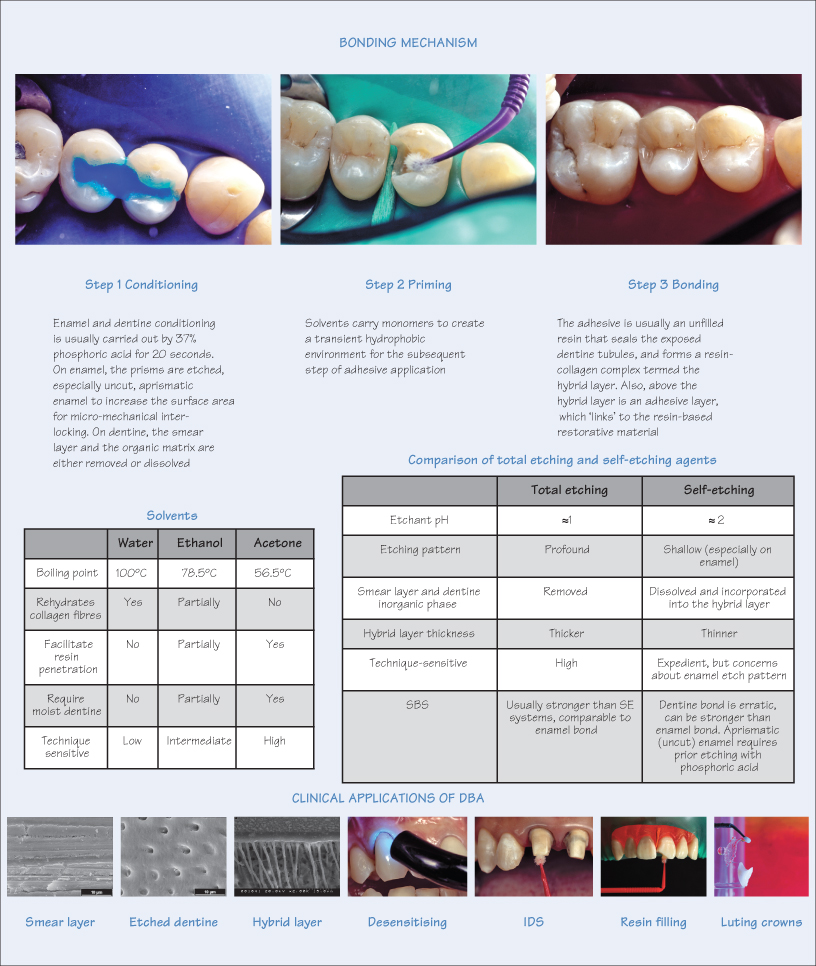45
Dentine Bonding Agents

Resin-based composite fillings materials and cements require an intermediary adhesive to adhere to enamel and dentine. These adhesives are termed dentine bonding agents (DBA).
Historical Background
In 1955, Buonocore introduced the acid etch technique for adhering acrylic restoratives to tooth substrate. While bonding to enamel has changed little since its inception more than half a century ago, bonding to dentine has proved far more elusive, undergoing enormous changes. Scientific research has yielded a better understanding of bonding to dentine, resulting in many generations of DBAs over the last six decades. The breakthrough for dentine bonding came in the mid-1980s with the 4th and 5th generations of DBAs, with the state-of-the-art 7th generation introduced in the last ten years.
Bonding to Tooth Substrate
Bonding to enamel and dentine are fundamentally different processes. For achieving a bond to tooth, the prerequisites are an inorganic and hydrophobic environment. Enamel is nearly 90% inorganic with little water content and therefore conducive for a successful and predictable bond by micromechanical interlocking with exposed enamel prisms. On the other hand, dentine is 45% inorganic, 30% organic and 25% water. Consequently, bonding to dentine with a higher organic and hydrophilic environment is far more challenging.
Dentine Bonding Mechanism
Dentine bonding is primarily micromechanical adhesion, as opposed to true chemical adhesion. However, some newer DBAs claim true chemical adhesion with tooth substrate. There are three distinct processes for achieving a dentine bond using DBAs:
- Conditioning the dentine with an etchant (usually 37% phosphoric acid) to remove or dissolve the smear layer and inorganic phase, exposing dentine tubules and collagen fibres;
- Priming with monomers (e.g. HEMA, PENTA or 4-META) to create a transient hydr/>
Stay updated, free dental videos. Join our Telegram channel

VIDEdental - Online dental courses


